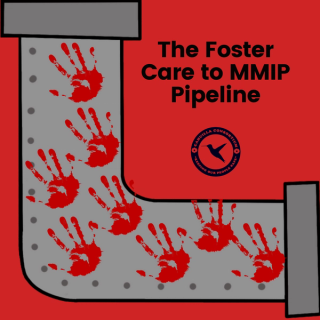The Foster Care to MMIP Pipeline

The Missing and Murdered Indigenous People epidemic is currently ravaging Indigenous populations in both the United States and Canada. When looking at the causes of the MMIP Epidemic, there are centuries of systemic and racial issues to choose from. However, research shows a modern pipeline directly contributing to the increasing numbers of MMIP in the US and Canada.
In Canada, Indigenous people make up less than 7% of the entire population; however, Indigenous children make up nearly 50% of all children in the Canadian Foster Care System. One report predicts that nearly half of all cases of MMIP in Canada were connected to the foster care system. Likewise, in the United States it is estimated that 15 NA/AN children per 1,000 born will be in foster care at some point in their lives. Certain areas with higher Native American populations see a significant spike in Native American children in foster care. For example, in Humboldt County California (Northern California), the Native American population makes up just over 6% of the total county population. However, Native Children account for approximately 40% of the children in foster care.
Experts believe a main reason for the pipeline from foster care to MMIP has to do with foster programs being “not culturally informed” with Native American cultures. In the United States alone, there are 574 federally recognized Native American Tribes each with its own customs and traditions. The number of Native American populations increase even more when accounting for Tribes with only state recognition. Not being informed of a foster child’s culture leaves a child and their connection to their homelife at risk to be victimized. Being a product of the foster care system coupled with the many other systemic issues leading to higher rates of violence and murder of Indigenous People contributing to the MMIP epidemic. The research and identification of the pipeline between foster care and the MMIP epidemic is recent. With more research being done, there is hopes to identify further issues and reduce the number of Native foster youth who go missing and murdered.
References:
https://www.cbc.ca/news/indigenous/opinion-foster-care-system-path-to-mmiwg-1.4552407
https://vesper.org/inaugural-summit-on-missing-and-murdered-indigenous-people/
https://www.casey.org/native-american-alaska-native-data-overview-2022/